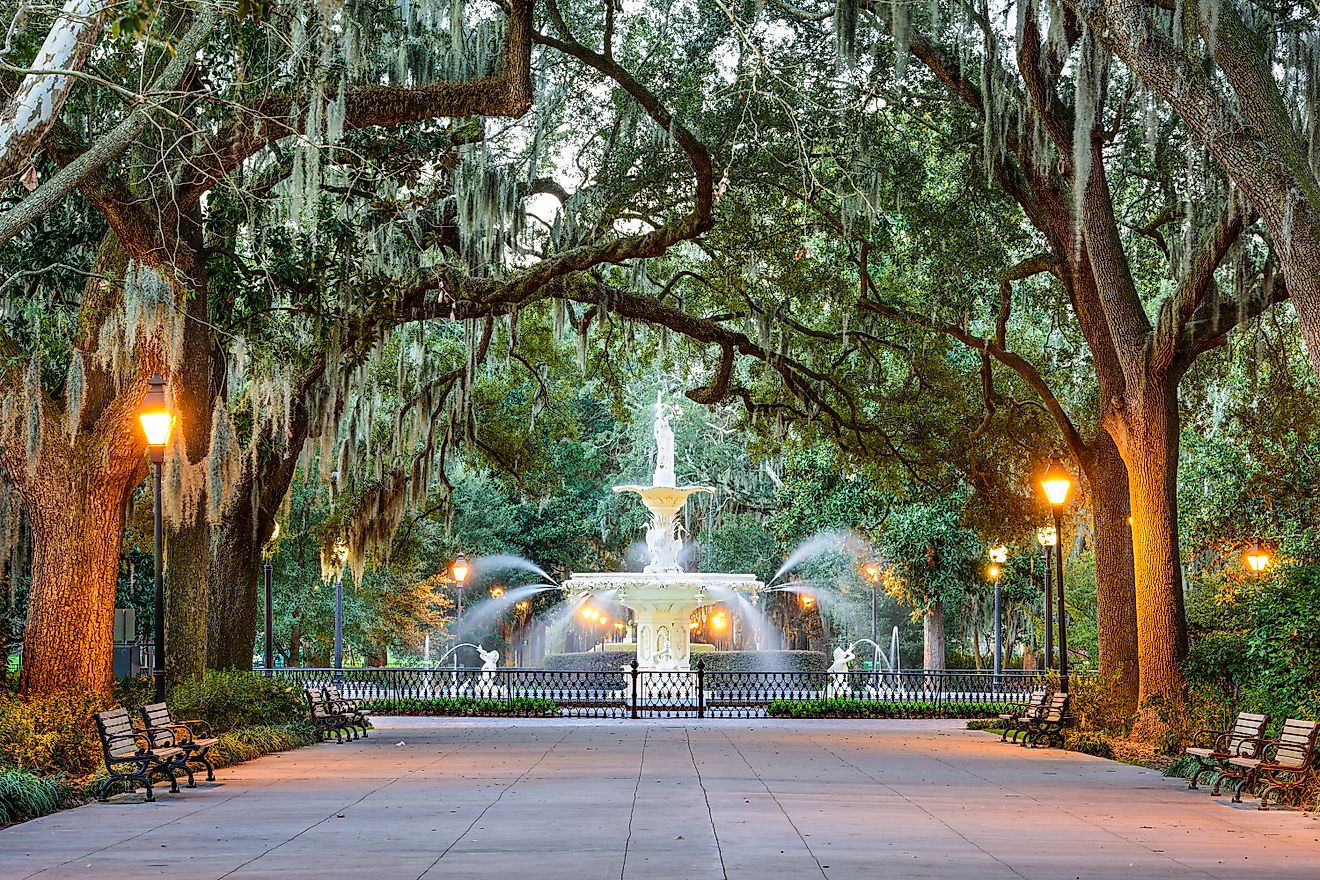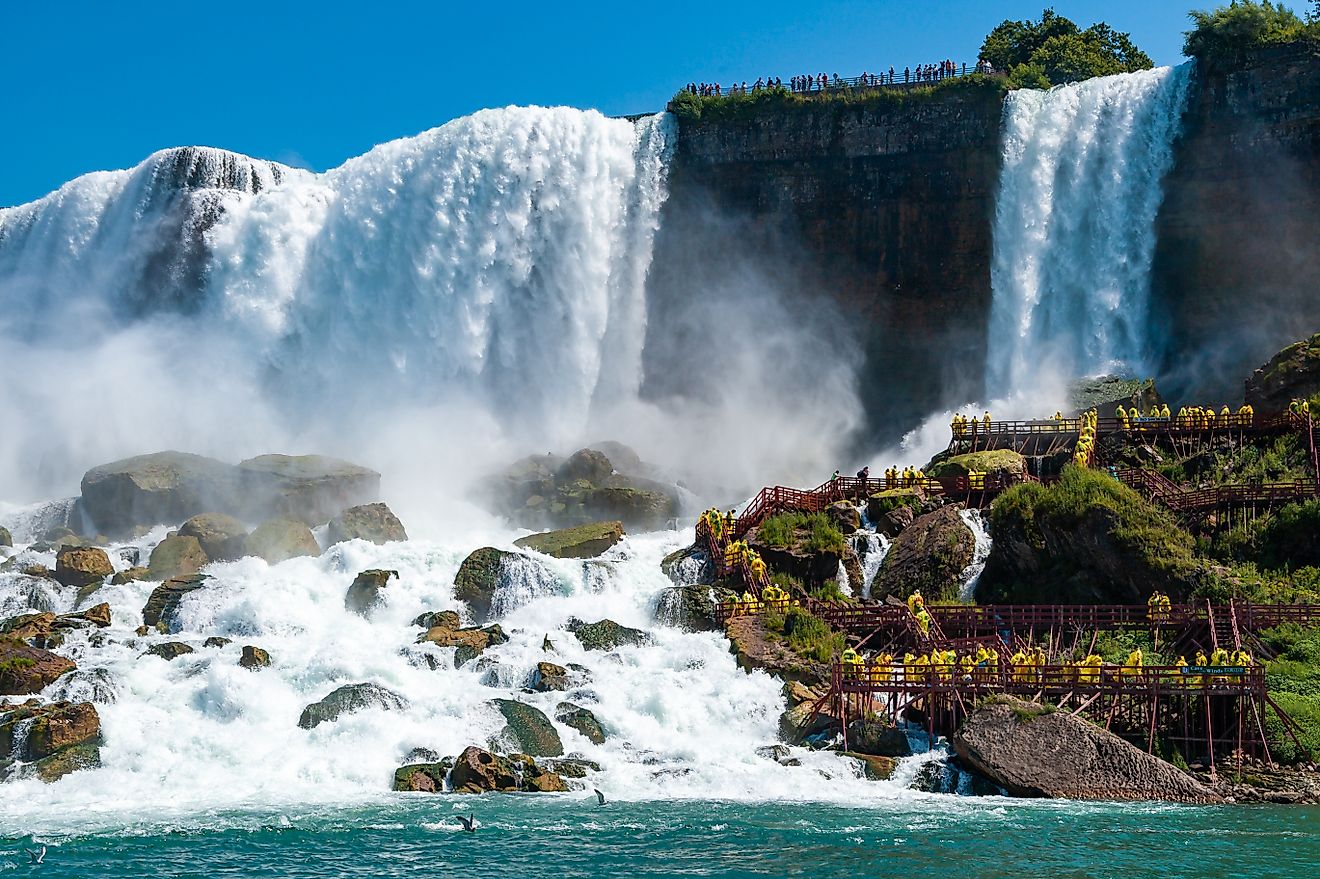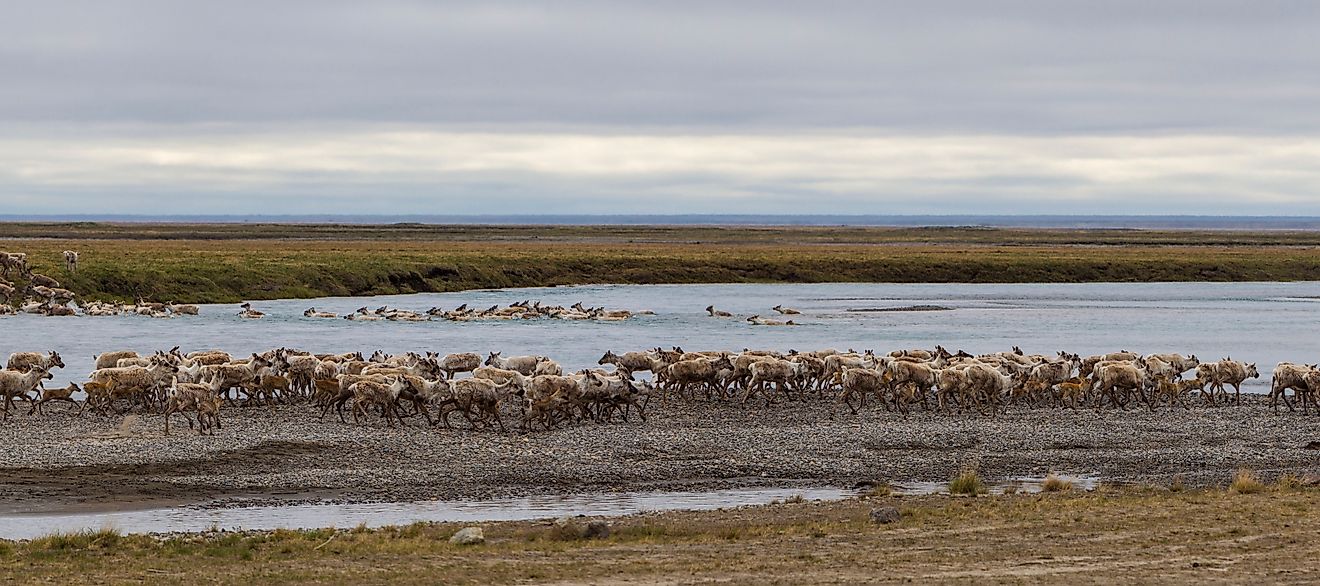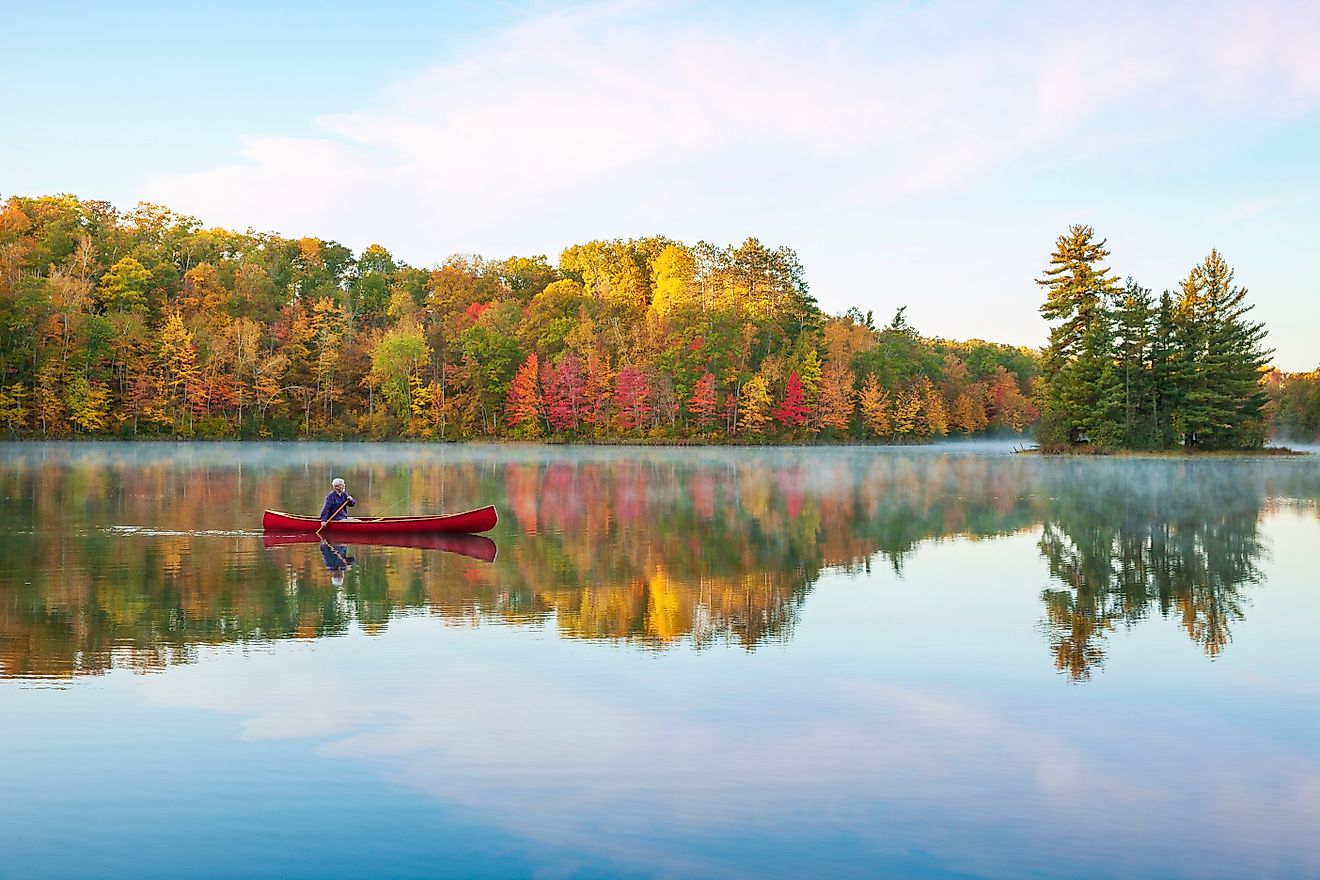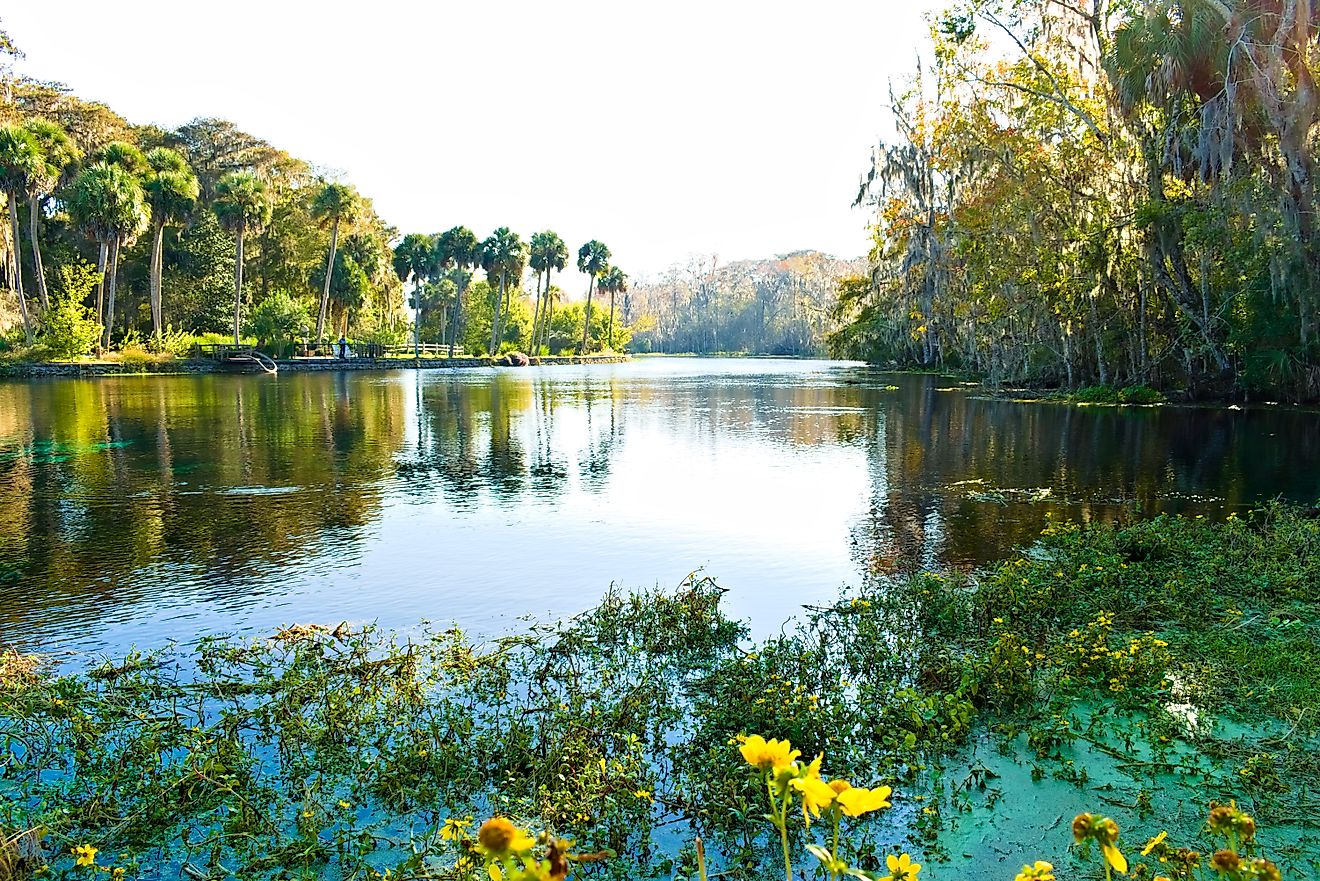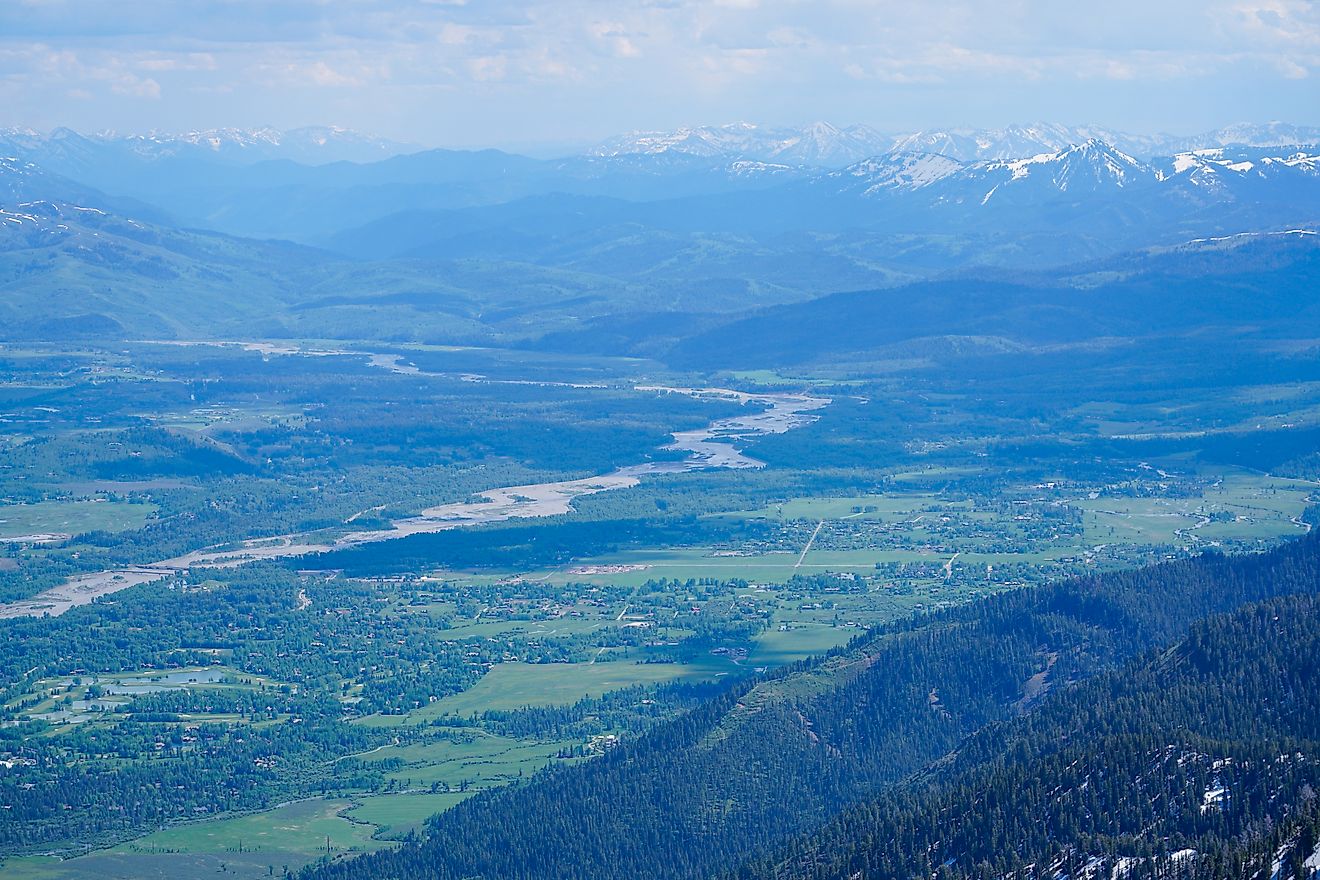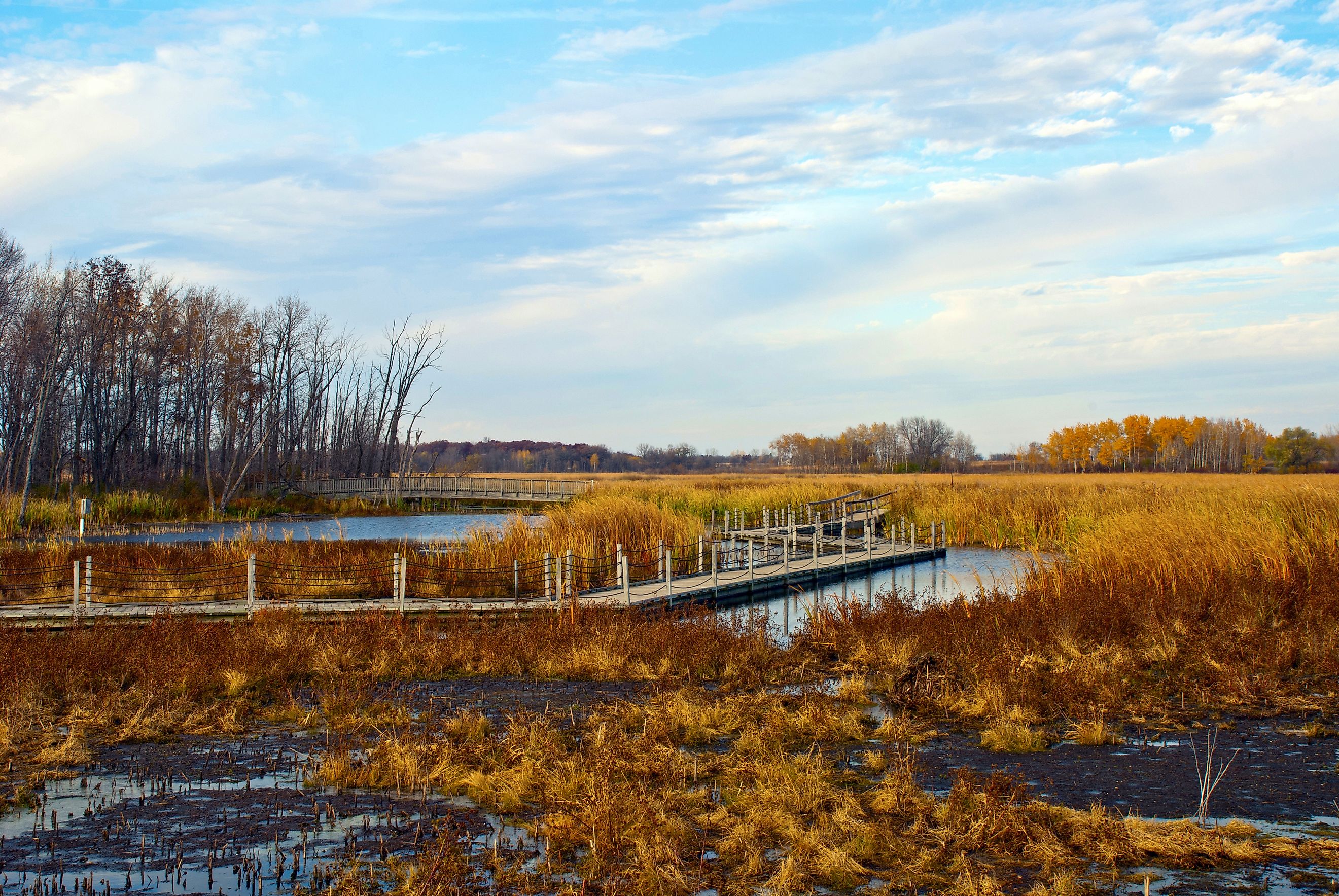
The Largest Swamps and Wetlands in America
Wetlands may not have the grandeur of mountain peaks or the drama of a canyon, but they hold a unique power all their own. Teeming with life, layered in mystery, and sprawling across millions of acres, the largest swamps and wetlands in America offer a glimpse into a world that thrives where water reigns. These landscapes filter water, shelter endangered species, absorb floodwaters, and in some cases, still guard secrets of America’s earliest days.
From moss-draped cypress groves in the South to windswept marshes in the North, the largest wetlands in the United States are as diverse as they are immense. Here’s a look at seven of the most expansive, ecologically rich swamp and wetland systems in the country, where nature is not just surviving but dominating.
Atchafalaya Basin

-
Acres: 1,000,000+
-
Location: South-central Louisiana
-
Type: River swamp and wetland basin
The Atchafalaya Basin is the largest swamp in the United States. Sprawling across south-central Louisiana, this massive floodplain of the Mississippi River Delta is a rich blend of swamp, marsh, and bottomland hardwood forest.
This is not just a swamp, it’s an entire ecosystem. The Atchafalaya is the beating heart of Cajun country and home to an extraordinary array of wildlife, including American alligators, Louisiana black bears, and over 250 bird species. Giant cypress trees tower from the water, Spanish moss sways in the humid breeze, and locals still live off the bounty of the bayou.
But the Atchafalaya is also under pressure. River engineering and coastal erosion threaten its delicate balance, prompting conservationists to fight for its future. Still, paddle into its backchannels and you’ll find a Louisiana wilderness that feels utterly timeless.
Everglades

-
Acres: 1,509,000 (within Everglades National Park); over 3,000,000 total ecosystem
-
Location: Southern Florida
-
Type: Subtropical wetland
While many people associate the Everglades with grassy sawgrass marshes, this World Heritage Site is technically a vast wetland ecosystem that includes swamps, sloughs, mangroves, and estuaries.
Often called the “River of Grass,” the Everglades is unique among wetlands. Water flows slowly from Lake Okeechobee toward Florida Bay, feeding an ecosystem that supports everything from alligators and panthers to rare orchids and manatees.
Much of the original Everglades has been drained or developed, but restoration efforts are ongoing. The vast stretches of open water, mangrove tunnels, and cypress domes continue to awe visitors who brave the humidity and mosquitoes for a glimpse into this iconic American wildland.
Okefenokee Swamp
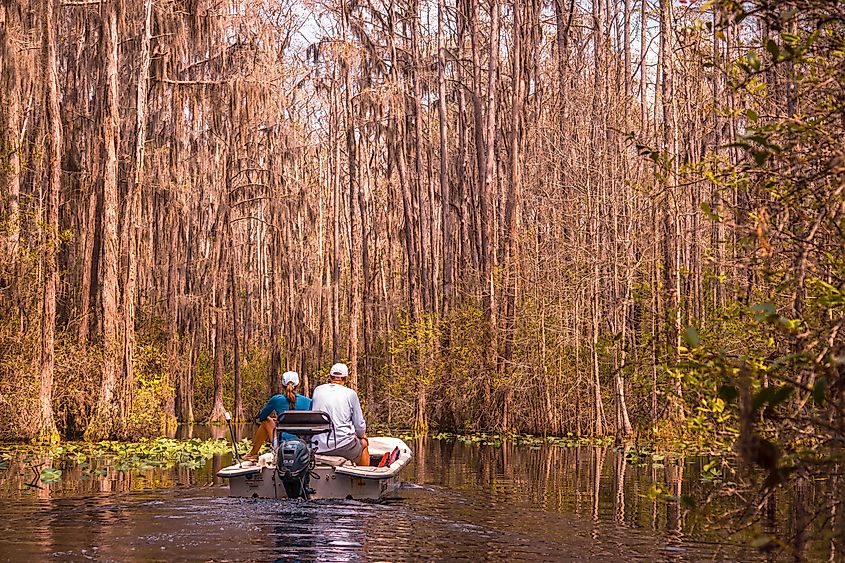
-
Acres: 438,000+
-
Location: Southeastern Georgia and northern Florida
-
Type: Blackwater swamp
With a name as storied as its history, the Okefenokee Swamp is both mythic and massive. It's a primeval landscape of blackwater, floating peat islands, and ghostly cypress trees that feels more like something out of folklore than modern America.
The name Okefenokee comes from a Native American word meaning "land of trembling earth," a nod to its quaking bog islands. This wetland is one of the oldest freshwater ecosystems on the continent, and it supports alligators, sandhill cranes, bobcats, and countless reptiles and amphibians.
Visitors can take flat-bottom boat tours through winding channels or hike the boardwalks to peer into this eerie, unforgettable swamp. Much of the swamp is protected within the Okefenokee National Wildlife Refuge, one of the best-managed refuges in the country.
Great Dismal Swamp
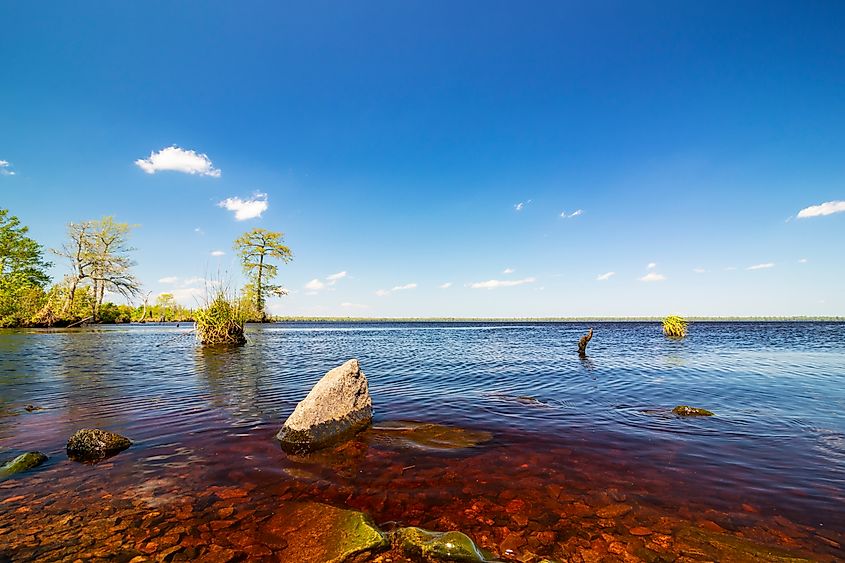
-
Acres: 113,000 (protected area); historically over 1,000,000
-
Location: Southeastern Virginia and northeastern North Carolina
-
Type: Forested swamp
Few wetlands are as steeped in legend and history as the Great Dismal Swamp. Once feared and avoided by early settlers, this swamp became a crucial refuge for enslaved people seeking freedom via the Underground Railroad.
Though much smaller today than it once was, the Great Dismal Swamp still holds fast to its identity. It centers around Lake Drummond, one of only two natural lakes in Virginia, and contains rare forested wetland habitats that support black bears, bobcats, otters, and over 200 bird species.
Walk the boardwalk or paddle into its depths and it’s easy to imagine a time when this dense, mosquito-ridden wetland was both feared and revered. Today, it offers solitude and quiet beauty for those who venture in.
Congaree Swamp
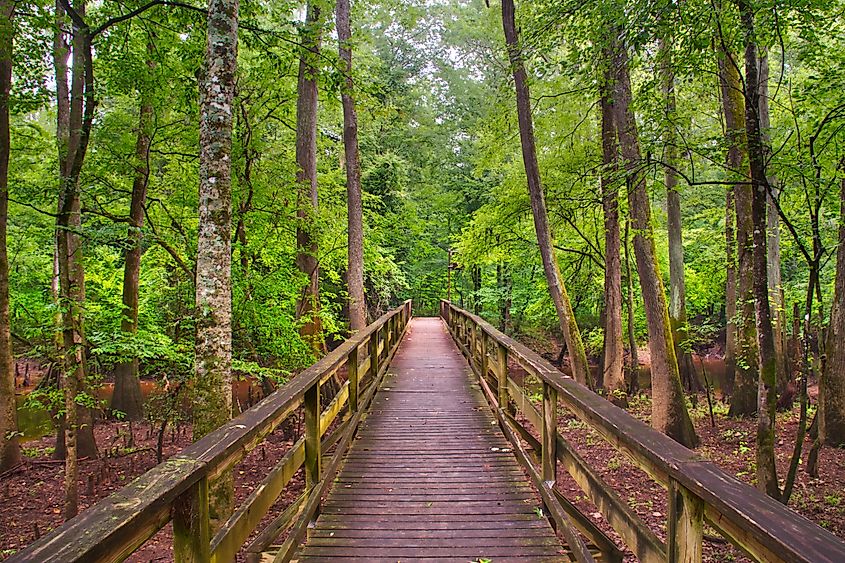
-
Acres: 27,000 (in Congaree National Park); part of larger 100,000+ acre floodplain
-
Location: Central South Carolina
-
Type: Floodplain forest and swamp
Congaree is not just one of the largest old-growth bottomland hardwood forests in the US; it's also a dynamic swamp system that experiences regular seasonal flooding. The result is a wetland that’s rich in both biodiversity and visual drama.
Congaree is a place of giants. Some of the tallest trees in the eastern US grow here, including loblolly pines, sweetgums, and tupelos. Visitors can hike elevated boardwalks through towering forests or canoe through quiet backwaters that flood with water after each rainfall.
This park doesn’t get the attention of Yellowstone or Yosemite, but that’s part of its charm. It’s a hidden gem for those looking to immerse themselves in the rhythms of a living floodplain.
Horicon Marsh
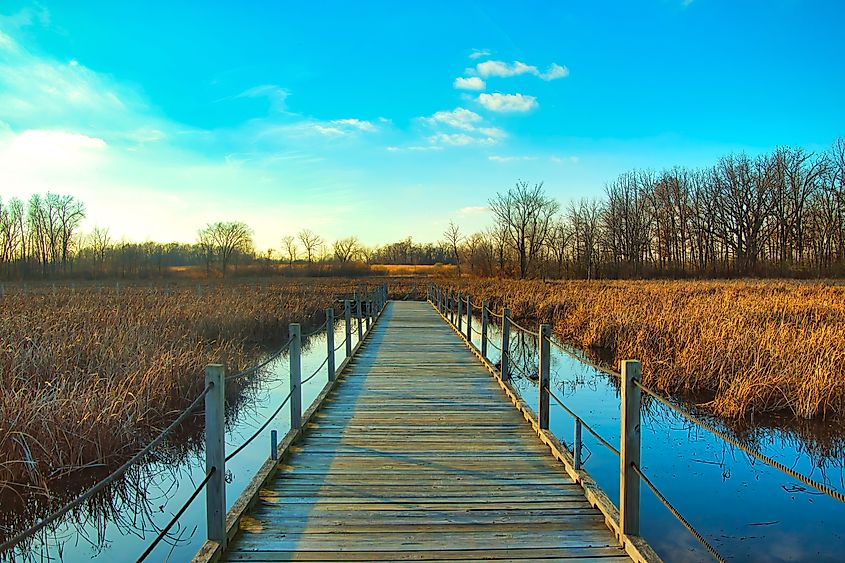
-
Acres: 33,000
-
Location: Southeastern Wisconsin
-
Type: Freshwater marsh
Most people don’t associate Wisconsin with wetlands, but Horicon Marsh flips that assumption on its head. This expansive freshwater marsh in the Midwest is a birdwatcher’s paradise and a wetland of international importance.
Horicon is divided into two parts: the northern portion managed by the U.S. Fish and Wildlife Service and the southern portion by the Wisconsin Department of Natural Resources. Together, they form the largest freshwater cattail marsh in the country.
Each year, hundreds of thousands of migratory birds stop here, including tundra swans, sandhill cranes, and ducks by the tens of thousands. Boardwalks, observation decks, and kayak routes give visitors up-close access to this incredibly rich landscape.
Cache River Wetlands
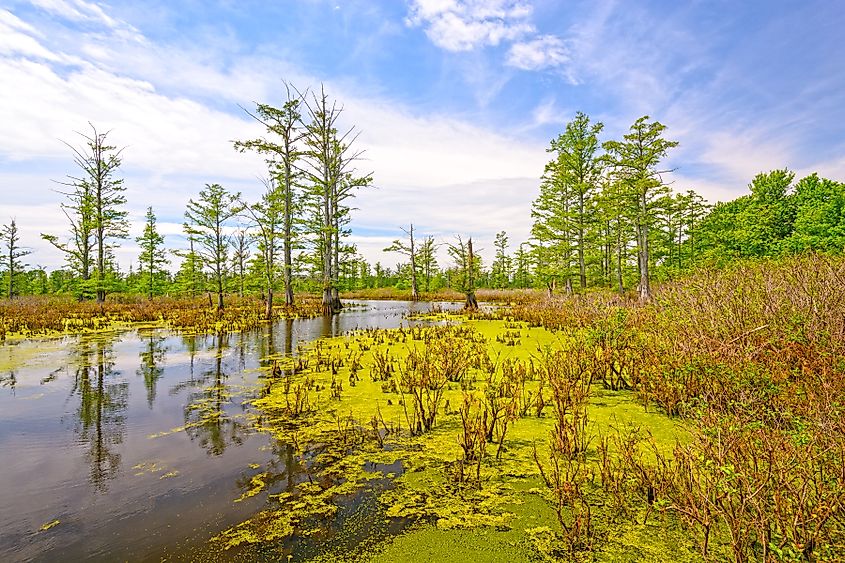
-
Acres: 60,000+
-
Location: Southern Illinois
-
Type: Bottomland wetland and cypress swamp
Tucked in the southern tip of Illinois is a wetland system that feels more like the Deep South than the Midwest. The Cache River Wetlands, sometimes called “Illinois’ bayou,” is a surprising mosaic of swamps, backwater sloughs, and cypress-tupelo forests.
What makes Cache River Wetlands especially notable are its ancient bald cypress trees (some over 1,000 years old) still thriving in the blackwater pools. Canoe trails, elevated boardwalks, and shaded hiking paths allow visitors to experience a habitat more reminiscent of Louisiana than landlocked Illinois.
The area is part of a broader conservation effort to protect and restore one of the most significant wetland habitats in the Mississippi River Basin.
Final Thoughts: Wetlands That Shape the American Landscape
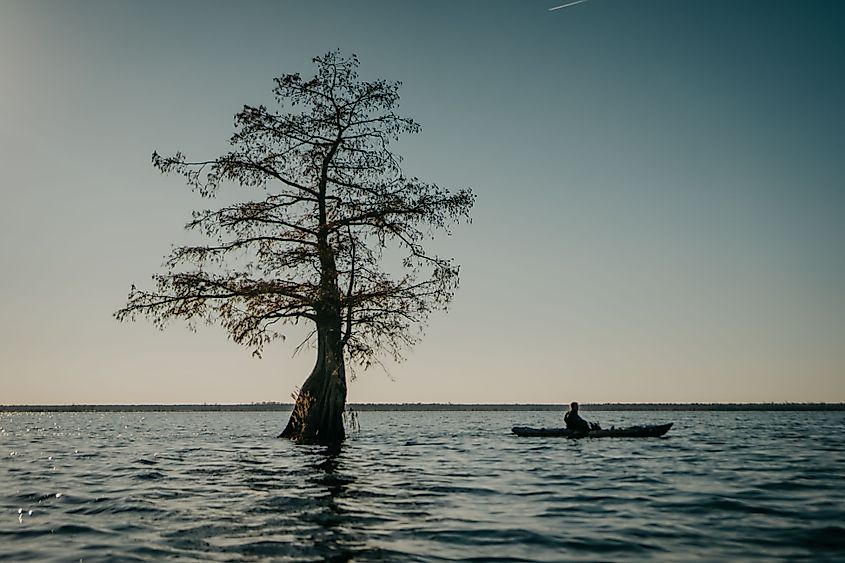
Swamps and wetlands are often overlooked in the pantheon of great American landscapes, but they are absolutely vital. These ecosystems purify water, store carbon, provide habitat, and buffer communities from storms and floods. They are also deeply woven into American history, culture, and ecology.
Whether you’re paddling through the haunting quiet of Okefenokee or watching cranes rise in clouds over Horicon, America’s largest wetlands are wild, wondrous, and well worth visiting and protecting.
The 7 Largest Swamps and Wetlands in the US
| Name | Size (Acres) | Location | Type |
|---|---|---|---|
| Atchafalaya Basin | 1,000,000+ | South-central Louisiana | River swamp and wetland basin |
| Everglades | 1,509,000 (Park); 3,000,000+ (total) | Southern Florida | Subtropical wetland |
| Okefenokee Swamp | 438,000 | Georgia and Florida | Blackwater swamp |
| Great Dismal Swamp | 113,000 (protected) | Virginia and North Carolina | Forested swamp |
| Cache River Wetlands | 60,000+ | Southern Illinois | Bottomland wetland/cypress swamp |
| Horicon Marsh | 33,000 | Southeastern Wisconsin | Freshwater marsh |
| Congaree Swamp | 27,000 (park); 100,000+ (floodplain) | South Carolina | Floodplain forest and swamp |
